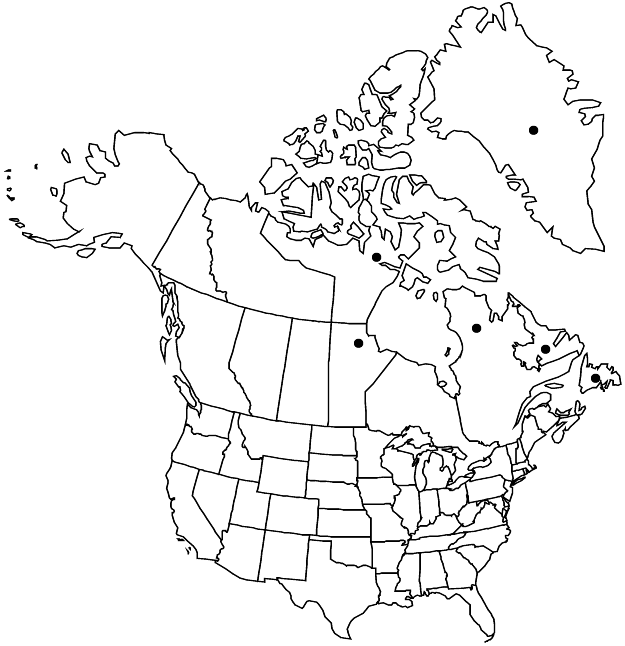Sagina caespitosa
in H. J. Rink, Grønland 2: 133. 1857.
Plants perennial, cespitose, forming small mats or cushions, glandular-pubescent or glabrous. Stems ascending to spreading, frequently purple-tinged, many-branched, not filiform. Leaves: axillary fascicles absent; basal not in primary rosettes, secondary rosettes usually present, blade linear to linear-subulate, 2–13 mm, not fleshy, apex apiculate to acute, glabrous; cauline connate basally, forming shallow, often purplish, scarious cup, blade with frequently conspicuous midvein, subulate, 3–9 (–12) mm, becoming shorter toward apex, not fleshy, apex apiculate to acute, glabrous. Pedicels filiform, glandular-pubescent, rarely glabrous. Flowers terminal, 5-merous or 4-merous and 5-merous; calyx base glandular-pubescent or glabrous; sepals broadly ovate to lanceolate, 2–2.5 mm, hyaline margins usually purple-tinged, at least at apex, apex obtuse to somewhat acute, glandular-pubescent or glabrous, remaining appressed after capsule dehiscence; petals elliptic to narrowly obovate, 2.5–3 mm, longer than or seldom equaling sepals; stamens 8 or 10. Capsules 3–3.5 mm, exceeding sepals, dehiscing to base. Seeds brown, obliquely triangular with abaxial groove, 0.5 mm, lateral surfaces frequently with elongate ridges, abaxial surface appearing smooth to pebbled.
Phenology: Flowering mid-late summer.
Habitat: Wet sands and gravels of shorelines and stream margins, wet mossy places, dry rocky barrens, gravelly hillocks
Elevation: 0-1300 m
Distribution

Greenland, Man., Nfld. and Labr., Nunavut, Que., arctic Europe
Discussion
Selected References
None.